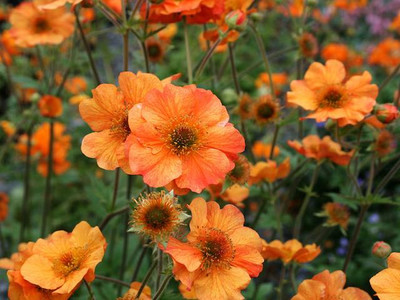A Guide to Perennial Flowers
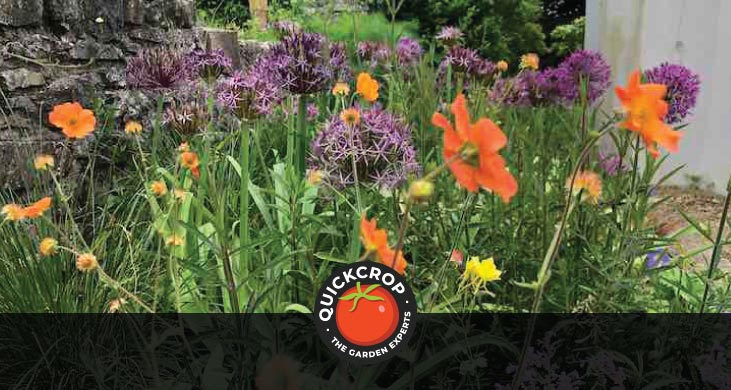
I have been spending more time in the Quickcrop nursery recently, as myself and Mags have been stock taking and working on some new cut flower seedling trays. At the end of last season, Mags did a huge amount of potting on so we are now able to offer larger 1 litre as well as our standard P9 (9cm) size plants for 85% of our perennial and grasses range.
After a cold start to the year, the recent warm weather has seen a huge spurt in growth in almost everything in the nursery. It is wonderful to see what was an unremarkable sea of pots suddenly burst into life and show off their unique shapes and colours.

Walking through the aisles is also an inspiration, as so many pleasing combinations suggest themselves: particularly the contrast between the saturated colours of flowering plants against the taupe and straw tones of the grasses. The whole place looked so good that I did a quick walk around taking some photos which, in no particular order, I include below.
Pictured above is Erysimum (everlasting wallflower) 'Bowles mauve' which looks stunning when planted en masse, with its silvery foliage and striking mauve flowers. You may be surprised to know that Erysimum is actually a member of the cabbage family; you can see the similarity with the shape of the flowers and the way they are displayed on their tall stems.

Erysimum 'Bowles Mauve' (Everlasting wallflower) - P9 & 1L Pots
View ProductOne of the biggest advantages of erysimum is its long flowering period for nearly the full season - one of the longest of any perennial. Flowering is also prolonged by regular dead heading and tidying, which keeps plants looking their best.
Erysimum looks most dramatic when planted in big drifts, meaning you need a lot of plants; but as it is very easy to propagate from cuttings, a few plants in year one can be used to create many multiples for the following season.
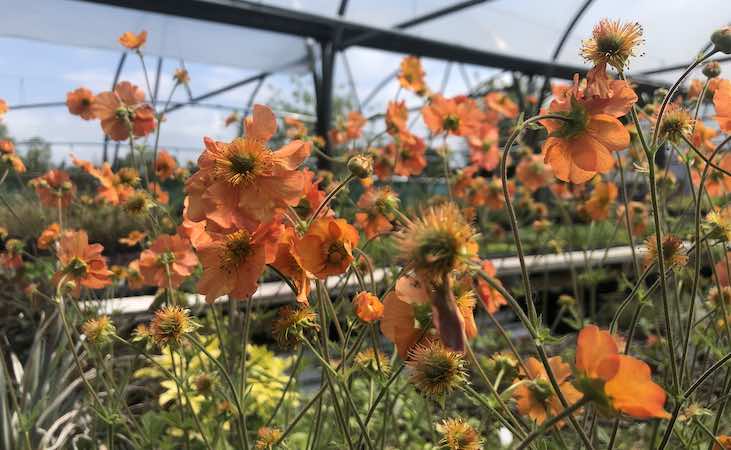
Another notably long flowering perennial (from May to September), Geum 'Totally tangerine' looking very pretty above with the sunlight shining through its orange petals. I much prefer this variety to the more common red geums. It is a particularly nice colour that goes well with almost everything, without being overpowering.
Again, deadheading will promote new blooms - but instead of removing the flowers only, it is better to remove the spent flowering stem right down to the base of the plant.
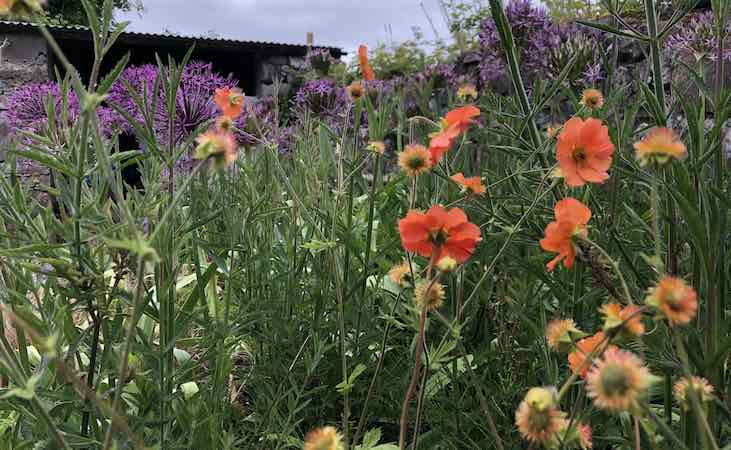
You can see 'Totally tangerine' above in my own garden, providing some warm tones against a backdrop of purple alliums in flower and spiky looking ' Verbena bonariensis' (which will be flowering in 3 or 4 weeks).
This bed was only planted last year, by the way, and has filled out really well, particularly the verbena and the contrasting yellow 'Achillea Cloth of gold' (pictured below).
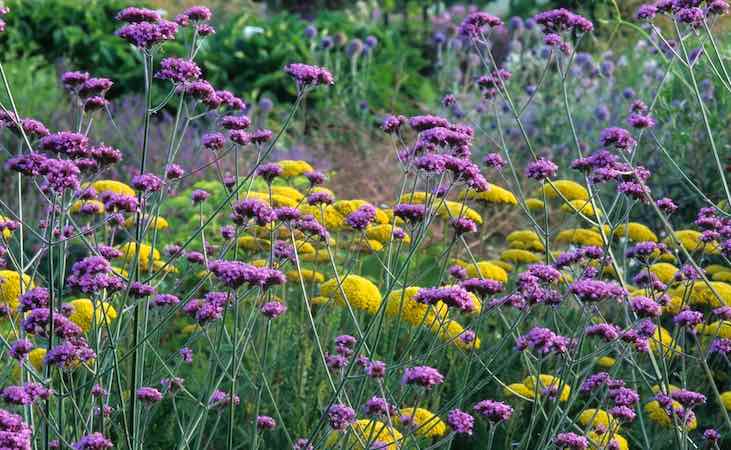
I do think it's worth making the point that perennials do exactly as they say ('perennial' comes from the latin 'per' and 'annus' meaning 'through the years) and come back every season. The plants will also get larger as the seasons pass, with vigorous plants eventually crowding out the more dainty species.
This means a perennial bed needs yearly tweaking by dividing larger specimens, but it also gives the added bonus of free plants to use elsewhere in the garden. My overall point is that a relatively modest investment in the first year will naturally multiply: not only to fill out the bed they are planted in, but to populate your whole garden.
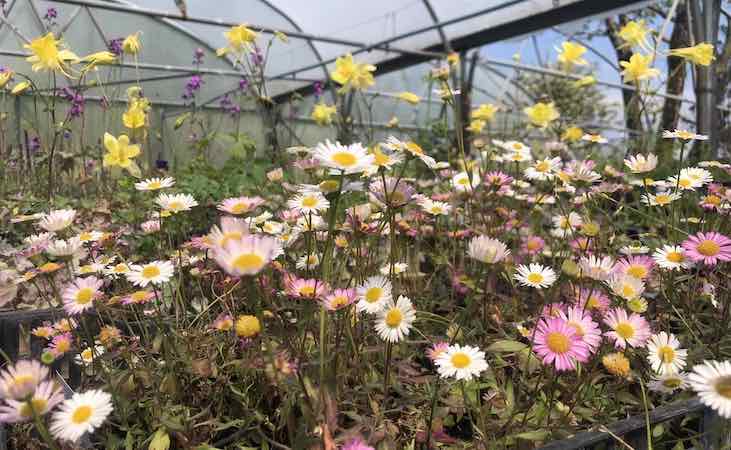
The above pretty little plant is Erigeron Karvinskianus or Mexican fleabane, which produces daisy-like flowers that start off white but change to pink as they mature. Easily overlooked because of its similarity to the daisy, it is a very useful plant that puts up with any amount of punishment.
Fleabane's hardiness makes it incredibly versatile, especially for softening hard edges or adding interest to difficult areas where little else will grow. This tough little plant will find a home in any crevice, whether in cracks in walls or the edges of paths, paving or steps.
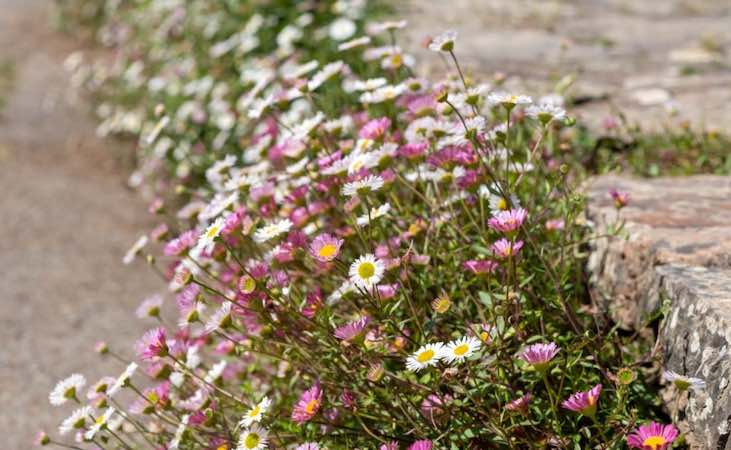
Erigeron also looks great in a pot, particularly a small one, where the cheerful, wiry stems growing out in all directions puts one in mind of a little boy with unruly hair.
You may have spotted the soft yellow of Aquilegia 'Yellow queen' in the background behind the erigeron and in my garden at the top of the page.
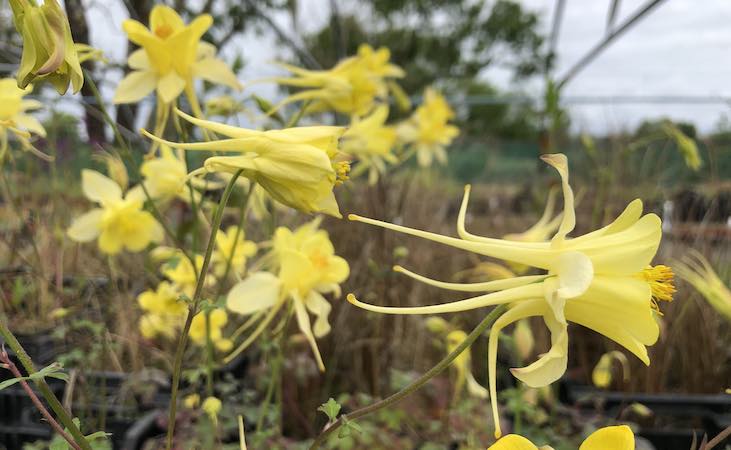
Like the tangerine orange of the geum, the calm primrose yellow of this aquilegia also goes very well with other colours where a more vivid yellow can look out of place. Of course, the flower shape is also absolutely fabulous, with it's dramatic, swept back spurs.
Aquilegias are also happy in partial shade, making 'Yellow queen' very handy for getting some bright, sunny colours into the darker areas in the garden. The flowering period is from May to the end of June, so it's at its best now. Again, removing spent flowers will encourage further blooms.

I couldn't show Aquilegias without including the striking 'William Guinness' above. Also flowering in May and June, it fills a handy gap between the end of the tulip bulbs and the start of the main late summer flowering season for many other perennials.
Aquilegias produce masses of seed and easily self-seed in the garden, so while they are relatively short lived plants, you won't notice as new versions come up every year. They are also unfussy about sun, shade or location, so your problem may be keeping numbers down rather than getting them to grow!
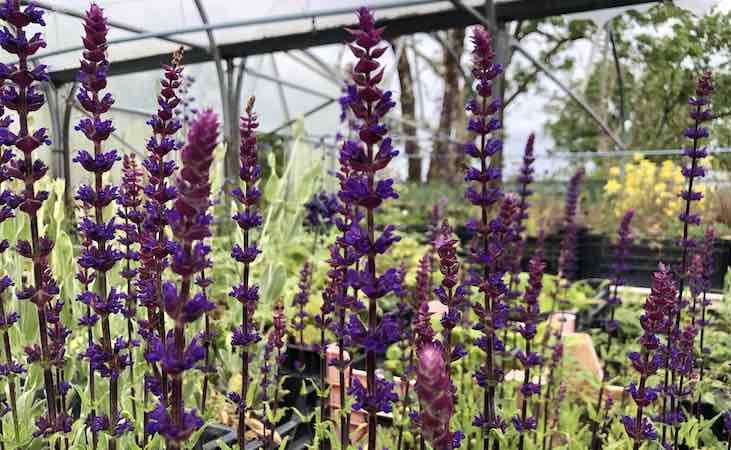
Salvia Nemorosa 'Caradonna' is another plant that looks best grown in drifts to get the full effect of its royal purple spires. The good news is that it is low maintenance (provided it is in well-drained soil) and propagates easily from dividing in Autumn.
Once established Salvia is also drought tolerant, so it's a good choice for dry gardens: handy if we get a summer drought like last year.
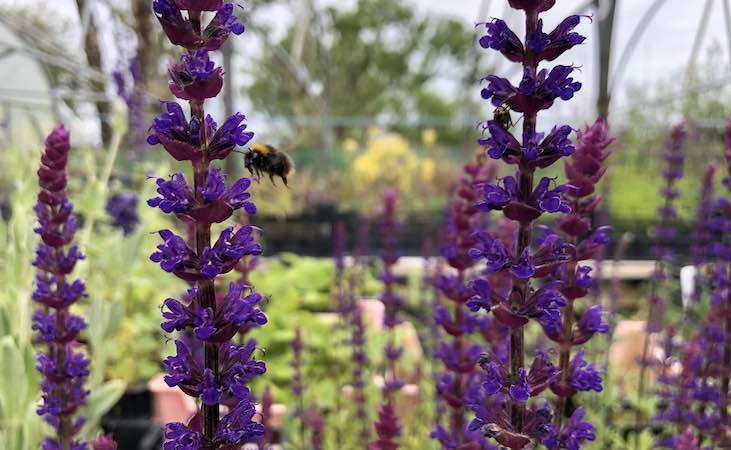
Salvia is also a key plant for pollinators and is an absolute magnet for bees, two of whom were snacking when I took the photo above. This variety in particular is a super choice for wildlife gardens, as it is vigorous, reliable and easy to grow.
That is just a quick run around mentioning a few plants that caught my eye. You can view our full range of flowering perennials here.

